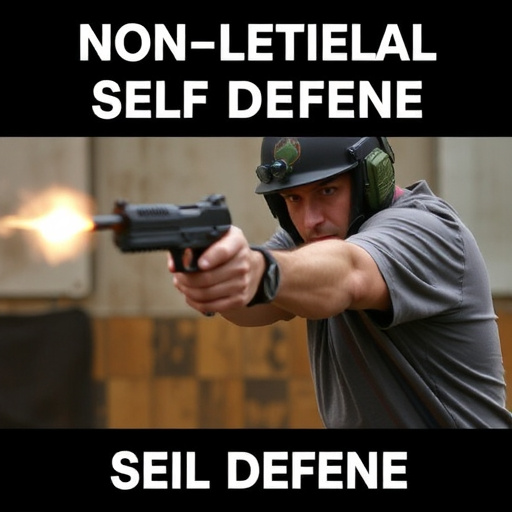When choosing a concealed stun gun flashlight combo, understanding battery specifications is key. Lithium-ion (Li-ion) and lithium polymer (LiPo) batteries offer high energy density for slimmer designs and longer lifespans, while Nickel-Metal Hydride (NiMH) batteries are more affordable and durable but bulkier. Battery capacity in milliampere-hours (mAh) determines runtime; higher mAh values mean longer use before recharging. Users should select a combo based on their needs—personal safety, outdoor activities, or survival kits—considering compactness, budget, power, and effectiveness for optimal performance and reliability.
“Unveiling the power source behind your defense—rechargeable stun gun batteries are a game-changer for personal safety. This comprehensive guide explores the specifications that matter most in choosing the right battery for your concealed stun gun flashlight combo. From battery types and capacities to charging standards and runtimes, we demystify these essential components.
Learn about the advantages of Lithium-ion vs NiMH batteries, understand how battery capacity impacts performance, and discover optimal voltage requirements. Dive into charging specifications, fast-charging technologies, and estimated charging times. Maximize your stun gun’s effectiveness with insights on runtime, efficiency, and battery longevity.”
- Battery Types and Capacities
- – Comparison of Lithium-ion vs Nickel-Metal Hydride (NiMH) batteries
- – Impact of battery capacity on stun gun performance and runtime
Battery Types and Capacities

When it comes to rechargeable stun gun battery specifications, understanding the types and capacities is key for users looking at a concealed stun gun flashlight combo. The most common battery types used in such devices are lithium-ion (Li-ion) and lithium polymer (LiPo). Li-ion batteries offer excellent energy density and stability, making them a popular choice. They can provide enough power to stun effectively while also powering the integrated flashlight.
Capacities vary widely, typically measured in milliampere-hour (mAh), with higher mAh ratings indicating longer runtime between charges. For instance, a 1000mAh battery might last for several hours of continuous use before requiring recharging, making it suitable for everyday carry or emergency situations. Users should consider their specific needs when selecting a stun gun combo, whether for personal safety, outdoor adventures, or as part of a survival kit.
– Comparison of Lithium-ion vs Nickel-Metal Hydride (NiMH) batteries

When it comes to power sources for rechargeable stun gun battery combos, such as the concealed stun gun flashlight combo, two prominent options are Lithium-ion (Li-ion) and Nickel-Metal Hydride (NiMH). Li-ion batteries have gained popularity due to their superior energy density, allowing for smaller, lighter weight designs. This makes them an ideal choice for compact concealed stun gun flashlights that need a long lifespan between charges. Moreover, Li-ion batteries offer faster charging times compared to NiMH alternatives, which is advantageous for users who require quick accessibility during emergencies.
On the other hand, NiMH batteries have been a traditional favorite among stun gun owners because of their lower cost and longer service life. Although they tend to be bulkier than Li-ion batteries, NiMH cells provide consistent performance over numerous charge cycles. This makes them a reliable option for those seeking an affordable yet durable power source for their stun gun flashlight combo. When considering the two, users should weigh the balance between cost-effectiveness and compact design when selecting the right battery type to meet their specific needs.
– Impact of battery capacity on stun gun performance and runtime

The battery capacity of a rechargeable stun gun directly influences its performance and runtime. A higher battery capacity means more stored energy, resulting in longer operation time between charges. For instance, a concealed stun gun flashlight combo with a larger battery may offer several minutes more usage compared to one with a lower-capacity cell. This extended runtime is particularly beneficial for users needing prolonged protection during outdoor activities or in emergency situations.
Battery capacity also affects the overall power and effectiveness of the stun gun. A more powerful battery can deliver higher voltage and current, ensuring a stronger stun effect. This is crucial for self-defense devices like concealed stun guns, where reliability and impact are paramount. Users should consider their specific needs—be it extended protection or maximum stun capability—when choosing a stun gun with a particular battery specification.
When considering a rechargeable stun gun with an integrated flashlight, such as the popular concealed stun gun flashlight combo, understanding battery specifications is key. The choice between Lithium-ion and NiMH batteries offers distinct advantages; Lithium-ion provides longer runtime and faster charging times, while NiMH batteries are more environmentally friendly and have higher energy density. The right battery selection can significantly impact your stun gun’s performance, ensuring you’re prepared in emergencies or personal defense scenarios. Opting for a model with a larger battery capacity means more time between charges, enhancing your peace of mind and effectiveness as a self-defense tool.
